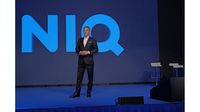On April 4, 2025, the Osservatorio Extended Reality & Metaverse of the Politecnico di Milano revealed groundbreaking findings on the state of augmented reality (AR) and digital twin technologies in Italy. Since 2020, 500 companies have embarked on AR projects, reflecting a growing trend that is shaping various sectors of the economy. The report highlights the emergence of Digital Twins—digital replicas of real-world objects or environments enhanced by artificial intelligence—as a key innovation in this field.
According to the latest research, there are currently 82 devices, including visors and smart glasses, available on the market. Notably, 17 of these devices were launched in 2024, with at least 20 more expected to debut in 2025. The report also notes the existence of 135 public virtual worlds and 122 platforms, indicating a vibrant ecosystem that is beginning to explore interoperability among major industry players.
In Italy, the total number of AR projects since 2020 has reached 611, with 123 new initiatives launched in 2024 alone. These projects are primarily concentrated in the tourism, manufacturing, and healthcare sectors. However, the report also reveals a significant gap in awareness, as 63% of large Italian companies remain insufficiently familiar with these transformative technologies.
The applications of Digital Twins are diverse. For instance, Walmart employs this technology to analyze customer flows, while Singapore has created virtual city replicas to simulate traffic and improve urban mobility. In the industrial sector, the Renault Group utilizes Digital Twins to replicate factories and simulate production lines, enabling them to test modifications without halting actual production.
Riccardo Mangiaracina, the Scientific Director of the Osservatorio Extended Reality & Metaverse, commented, "The foundations for the Industrial Metaverse are being laid, where the integration of physical and digital realms will enable the development of advanced applications for monitoring, design, prototyping, and training, leading to cost and time savings." This statement underscores the potential of these technologies to revolutionize industries.
Meanwhile, the NIQ&GfK Insight Summit Italy 2025, held near Milan, gathered over 500 professionals to discuss the current dynamics of the Italian market. The summit provided a comprehensive overview of consumer sentiment and market evolution, particularly in light of recent stabilization trends. After years of turbulence, the market appears to be consolidating, although some experts express concern over this apparent calm.
During the summit, experts from NIQ&GfK analyzed the transformations in consumer behavior, the impact of media, and generational dynamics, offering strategic tools to navigate an ever-evolving economic landscape. Enzo Frasio, CEO of NIQ&GfK Italy, introduced the concept of "coompetition," suggesting that organizations can collaborate in certain areas while competing in others. He emphasized that fostering mutually beneficial relationships among industry players can generate widespread value for both the market and consumers.
The first session of the summit, titled "Recharging Consumers: Make Next Now," featured Daniele Novello, who reflected on the year 2024. Despite its potential, 2024 was viewed as a missed opportunity for significant growth. The sentiment analysis conducted over 25 years indicates a stable outlook for Italians, yet the goal of substantial growth remains unmet. While price dynamics improved compared to the past, consumer spending did not see a corresponding increase, as Italians focused on rebuilding their savings after a period of high inflation.
Looking ahead, the potential for a more decisive recovery in consumer purchases exists, but it hinges on reigniting Italians' buying intentions. The challenge lies in creating a new dialogue with consumers through a strategic approach that integrates product innovation, communication, and distribution.
Marco Paoletti, Daniela Cardaciotto, Laura Strada, and Rossella Perruso presented an in-depth analysis of key retail and consumer trends to watch for in 2025. According to data from NIQ&GfK, consumer spending in Italy increased by 1.7% in 2024, with large-scale consumption slightly outperforming the Tech & Durables sector.
As businesses navigate this complex landscape, they must adapt to evolving consumer preferences, which are increasingly characterized by a desire for convenience and product availability. The analysis identified growth categories, such as optics and small appliances in the Tech & Durables sector, as well as high-protein products and cookbooks in the fast-moving consumer goods (FMCG) sector. This highlights the need for companies to tap into latent consumer needs and demographic trends.
Moreover, the summit underscored that consumer loyalty is waning, necessitating a balance between perceived value and convenience. Retailers that successfully leverage promotional strategies and invest in their brands have seen growth in the FMCG sector. However, today’s consumers are discerning and often contradictory, seeking a balance between wellness and gratification, sustainability and convenience, and digital versus physical experiences.
The customer experience has become paramount, built on the interplay between three key elements: the store, the shelf, and customer loyalty. Stores are evolving into immersive experiences designed to attract and engage customers through personalized promotions and tailored services. The shelf, in turn, becomes a strategic connection point between brands and consumers, while the home emerges as a focal point for loyalty through trial programs and post-sale services.
Finally, the summit addressed the evolution of media consumption, emphasizing the importance of a "Full Audience" approach that transcends generational stereotypes. As media landscapes fragment, consumers often find themselves in isolated "bubbles," making it essential for brands to establish reliable partnerships that guide strategic choices and generate value.
In this context, the "Full Audience" approach enables brands to reach diverse demographic segments, including the over-55 age group, which is increasingly influential in media consumption but frequently overlooked in advertising planning. Reliable data and in-depth insights are crucial for crafting effective narratives that resonate with a complex audience.
The closing session, titled "Full View in Action: End to End Success for Innovation," featured Luca Gerosa and Christian Centonze, who emphasized the critical role of product innovation in driving business growth. They presented real case studies illustrating how companies that align their products with consumer preferences are twice as likely to succeed. However, the path to innovation is fraught with challenges, as successful product launches sell 18 times more than the average new product, yet only 3% of launches achieve success.
NIQ&GfK’s "Full View" approach positions the company as a pivotal partner for businesses, offering insights and advanced analytics throughout the innovation process. By defining innovation areas and developing products that meet consumer needs—augmented by artificial intelligence—NIQ&GfK guides companies toward targeted activation, optimizing communication and sales strategies while measuring return on investment through sales and incremental revenue analysis. This approach transcends traditional boundaries, embracing emerging technologies for growth grounded in robust data and successful partnerships.






